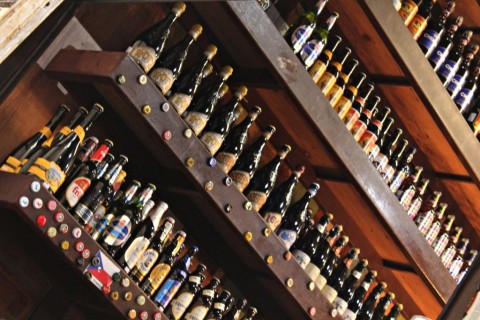World Cup and hot summer combine to create beer bottle shortage for German brewers
On the heels of a carbon dioxide (CO2) shortage in the UK that caused some breweries to ration beer production, Germany’s long, hot summer and the revelry surrounding the World Cup have combined with suboptimal demand forecasting to create a significant shortage of beer bottles, causing breweries large and small to plea to customers to return their empties.
Case in point: Germany’s Moritz Fiege reached out to its followers in this (translated) Facebook post:
"Great weather + great beer = much thirsty. The Hook: although we regularly sold new empties, the bottles are close in our bottling. Therefore: before you go to summer vacation, please quickly bring your Moritz Fiege empties to the drinks dealer. According to the motto: first pledge, then (p) Holidays!??️??️ While you're in the sun, we'll make the bottles full. Big Moritz Fiege Word!?"
Beyond the factors of heat and the World Cup, a low deposit incentive and unique bottle shapes in Germany are contributing to the shortage. The bottle shortage impacts smaller, family-owned-and-operated breweries like Moritz Fiege more significantly than larger brew houses, especially when you consider that they’ve ramped up production in an attempt to meet the hot summer’s demand. So how could breweries, large and small, avoid such shortages in the future?
Taking a closer look at the demand management process
On the bottle supply front, though Moritz Fiege forecasts their bottle numbers a year in advance, incorporating the notion of having safety stock on hand would serve well during the hot summers and World Cups to come. But what of the beer industry supply chain? The aforementioned CO2 shortage – the ingredient that puts the suds in the suds – was a result of several fertilizer plants (the byproduct of which is CO2) simultaneously closing for maintenance. Here’s where a little demand-driven supply chain planning, in the form of collaboration, can go a long way. Knowing of planned shutdowns and having the ability to perform what-if scenarios would allow their planners to extrapolate the impact of the shortage across the supply chain, giving them the opportunity to plan demand forecasting accordingly with alternate suppliers.
Proper demand planning helps supply chain planners create an unconstrained consensus demand forecast that combines the statistical forecast with multiple functional forecast perspectives and events – which can take into account such things as an overly hot summer and the peaks created by sporting events such as the World Cup. When variable inputs (weather, cultural, geopolitical, etc.) are weighted and adjusted as part of a collaborative, concurrent planning approach to supply chain management, organizations can create a demand plan that incorporates strategic capacity and supply management to continuously monitor and adjust the portions of the demand plan that present variance or risk. Or in other words, beer bottle shortage averted. Thirst, quenched.
Additional Resources
- Demand planning frequently asked questions





Leave a Reply